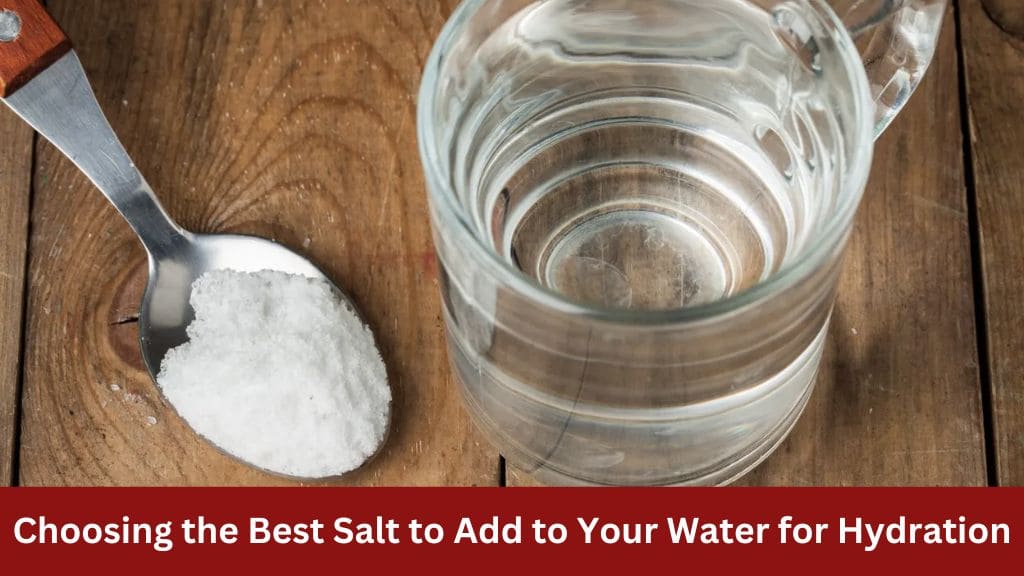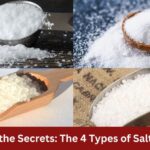In the quest for optimal hydration, many have turned to the practice of adding salt to their water. This practice, often touted for its potential to replenish electrolytes lost through sweating, has gained popularity, especially during hot weather or intense physical activity. However, the type of salt used can significantly impact its effectiveness and potential health implications. In this comprehensive guide, we delve into the various types of salt and their suitability for adding to water to enhance hydration.
Understanding the Role of Salt in Hydration
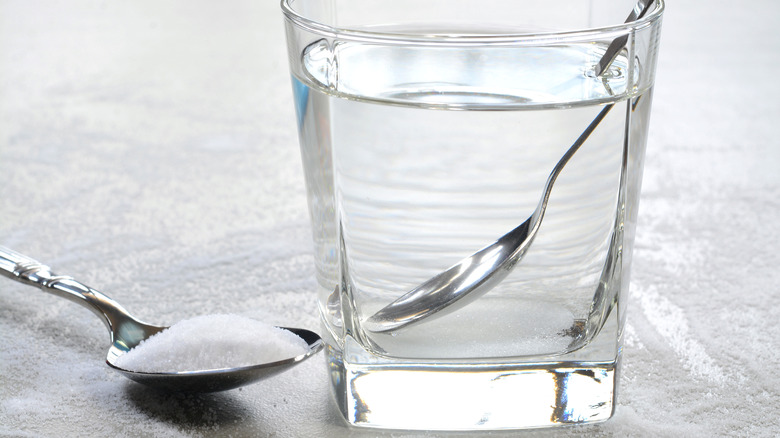
Before delving into the specifics of salt types, it’s essential to grasp the role of salt in hydration. Salt, or sodium chloride, is a crucial electrolyte that plays a pivotal role in maintaining fluid balance within the body. When we sweat, we lose not only water but also essential electrolytes, including sodium. Replenishing these electrolytes becomes imperative, especially during prolonged physical activity or exposure to high temperatures.
The Importance of Electrolyte Balance
Electrolytes are minerals that carry an electric charge and are vital for various bodily functions, including muscle contraction, nerve signaling, and fluid balance. Sodium, potassium, magnesium, and calcium are among the key electrolytes that need to be replenished to maintain optimal hydration and overall health.
Types of Salt for Hydration

Table Salt
Overview: Table salt, also known as refined salt, is perhaps the most widely used salt in households worldwide. It undergoes extensive processing, which removes impurities and minerals, leaving behind primarily sodium chloride.
Suitability for Hydration: While table salt can effectively replenish sodium lost through sweating, it lacks the additional minerals present in less refined salts. However, its affordability and widespread availability make it a convenient option for enhancing hydration, especially for those seeking a simple solution.
Himalayan Pink Salt
Overview: Himalayan pink salt is harvested from ancient sea salt deposits in the Himalayan Mountains. It retains its natural pink hue, which is attributed to trace minerals like magnesium, potassium, and calcium.
Suitability for Hydration: Due to its mineral-rich composition, Himalayan pink salt offers not only sodium but also other essential electrolytes. These additional minerals may provide a more comprehensive approach to hydration, making it a popular choice among health-conscious individuals.
Sea Salt
Overview: Sea salt is derived from evaporated seawater and comes in various forms, including coarse and fine grains. It contains trace minerals like magnesium, potassium, and calcium, depending on its source and processing.
Suitability for Hydration: Like Himalayan pink salt, sea salt provides a broader spectrum of minerals compared to table salt. Its natural composition makes it an attractive option for those looking to replenish electrolytes lost during physical activity or exposure to heat.
Celtic Sea Salt
Overview: Celtic sea salt is harvested from the coastal regions of Brittany, France. It undergoes minimal processing, retaining its natural moisture and mineral content, which includes magnesium, potassium, and calcium.
Suitability for Hydration: With its rich mineral profile, Celtic sea salt offers an excellent choice for enhancing hydration while providing essential electrolytes beyond sodium. Its less refined nature preserves the integrity of its mineral content, making it a preferred option for those seeking a holistic approach to hydration.
Considerations When Choosing Salt for Hydration
Several factors should be taken into account when selecting salt for hydration:
- Mineral Composition: Opt for salts rich in essential electrolytes like sodium, potassium, magnesium, and calcium to support comprehensive hydration.
- Purity and Processing: Choose minimally processed salts to ensure maximum mineral content and potential health benefits.
- Taste and Preference: Experiment with different salts to find one that suits your palate and enhances your hydration routine.
- Health Considerations: Individuals with specific health conditions, such as hypertension or kidney disease, may need to limit their sodium intake. Consult with a healthcare professional before adding salt to your water, especially if you have underlying health concerns.
Factors to Consider When Choosing Salt for Hydration
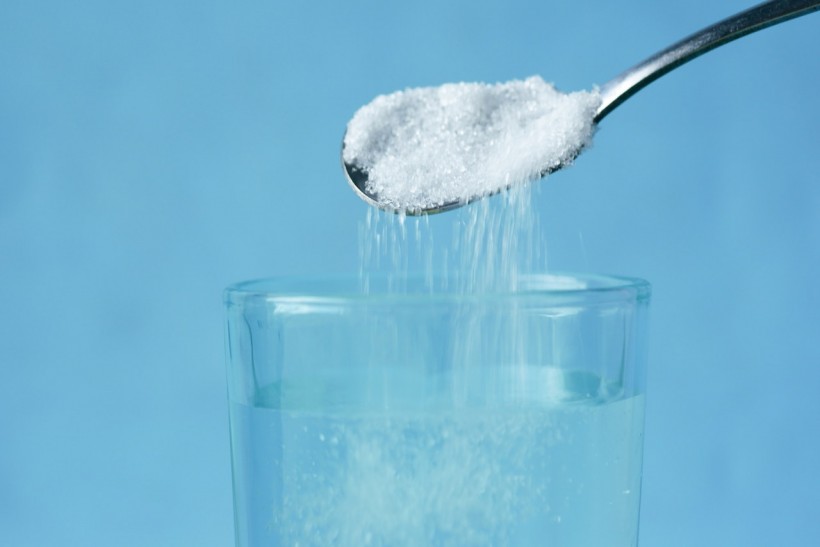
While the type of salt used can influence its effectiveness for hydration, several other factors warrant consideration:
Mineral Composition
The mineral composition of salt varies depending on its source and processing methods. Opt for salts rich in essential electrolytes like sodium, potassium, magnesium, and calcium to support comprehensive hydration.
Purity and Processing
Some salts undergo extensive processing, which may strip away beneficial minerals. Choose minimally processed salts to ensure maximum mineral content and potential health benefits.
Taste and Preference
The taste of salt can vary significantly depending on factors like mineral content and processing. Experiment with different salts to find one that suits your palate and enhances your hydration routine.
Health Considerations
Individuals with specific health conditions, such as hypertension or kidney disease, may need to limit their sodium intake. Consult with a healthcare professional before adding salt to your water, especially if you have underlying health concerns.
Hydration Tips Beyond Salt
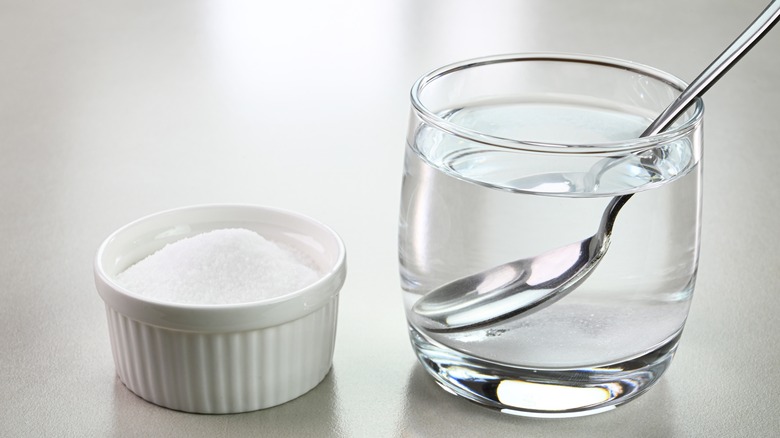
Drink Water Regularly
In addition to consuming salt-enhanced water, ensure you’re drinking an adequate amount of plain water throughout the day. Hydration needs vary depending on factors like age, weight, activity level, and environmental conditions. Aim to drink water regularly, even when you’re not feeling thirsty, to maintain optimal hydration levels.
Eat Water-Rich Foods
Incorporate hydrating foods into your diet to supplement your fluid intake. Fruits and vegetables with high water content, such as cucumbers, watermelon, oranges, and tomatoes, can contribute to hydration while providing essential vitamins, minerals, and antioxidants. Including these foods in your meals and snacks can help support overall hydration and nutrition.
Monitor Urine Color
Pay attention to the color of your urine as it can provide valuable insights into your hydration status. Pale or light yellow urine typically indicates adequate hydration, while dark or concentrated urine may signal dehydration. Aim for pale yellow urine as a marker of sufficient fluid intake, and increase your water consumption if your urine appears darker than usual.
Consider Electrolyte Supplements
In addition to salt, consider incorporating electrolyte supplements or sports drinks into your hydration routine, especially during prolonged physical activity or exposure to heat. Look for products with balanced electrolyte profiles that include sodium, potassium, magnesium, and calcium. Avoid beverages with excessive added sugars or artificial ingredients.
Hydrate Before, During, and After Exercise
Prioritize hydration before, during, and after exercise to support optimal performance and recovery. Drink water or electrolyte-rich beverages before your workout to ensure you start adequately hydrated. During exercise, sip fluids regularly to replenish fluids lost through sweat. After your workout, continue hydrating to replace any fluid deficits and support muscle recovery.
Listen to Your Body
Pay attention to your body’s thirst cues and adjust your fluid intake accordingly. Thirst is a reliable indicator of hydration needs, so drink water whenever you feel thirsty. Additionally, be mindful of other signs of dehydration, such as dry mouth, fatigue, headache, and dizziness, and respond promptly by increasing your fluid intake.
Customize Your Hydration Routine
Hydration needs can vary depending on factors like age, gender, activity level, and environmental conditions. Customize your hydration routine to suit your individual needs and preferences. Experiment with different hydration strategies, including salt-enhanced water, electrolyte-rich beverages, and hydrating foods, to find what works best for you.
Conclusion
Choosing the right salt to add to your water can have a significant impact on hydration and overall health. While table salt remains a convenient option, salts like Himalayan pink salt, sea salt, and Celtic sea salt offer additional minerals that support comprehensive hydration. Consider factors like mineral composition, processing methods, taste preferences, and health considerations when selecting salt for hydration. Remember to complement salt intake with other hydration strategies, including regular water consumption, hydrating foods, and electrolyte supplements, to maintain optimal hydration levels and support overall well-being.

